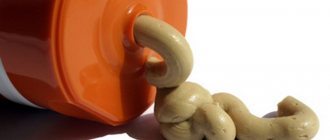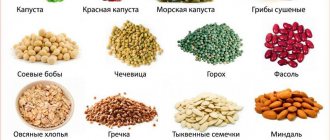Intestinal bleeding
Intestinal bleeding accounts for 20% of all acute, 50% of chronic and most hidden, including the most difficult for topical diagnosis, gastrointestinal bleeding.
The cause of profuse bleeding is
- duodenal ulcers - 35-40%,
- stomach ulcers - 15-20%,
- erosive-hemorrhagic gastritis - 15-20%.
Intestinal bleeding is the most difficult to diagnose, with the exception of hemorrhoids. Bleeding from the small intestine is especially difficult to identify.
Causes
The source of bleeding can be diseases of the small and large intestines, in which the integrity of the mucous membrane and other membranes of the intestinal wall is disrupted.
According to H. Hoshino, which he cited based on colonoscopy performed in 292 patients with intestinal bleeding, the most common causes were:
- ischemic colitis - 20.2%,
- hemorrhoids - 13%,
- nonspecific colitis - 8.9%,
- ulcerative colitis - 6.9%,
- colitis after antibacterial therapy - 5.5%,
- polyp - 5.5%,
- cancer - 4.8%,
- diverticulosis - 3.4%
- and other diseases of the colon (angiodysplasia, nonspecific rectal ulcer, infectious colitis, Crohn's disease, radiation colitis, tuberculosis).
Bleeding can occur with cirrhosis of the liver with portal hypertension syndrome, with tumor diseases of the biliary tract and pancreas. In these cases, blood is released along with bile or pancreatic juice.
Some blood diseases and kidney failure can also be complicated by intestinal bleeding.
Causes of bloody stool
Bloody feces
is a symptom of a number of diseases of the intestines and lower gastrointestinal tract of an oncological, inflammatory or infectious nature. Experts divide the triggering factors that cause bleeding into several groups:
| Group of reasons | What are they? |
| Neoplasms of a malignant nature | Most often, they are represented by colorectal cancer, even in the initial stages of which small amounts of blood may appear. If the tumor is not treated and it disintegrates, serious blood loss is possible due to the melting of large blood vessels. |
| Pathological conditions characterized by proliferation of the colon mucosa | Abnormal growths include polyps, which are one of the most common causes of blood in the stool. This especially applies to the villous type of polyps, since they are rich in blood vessels. |
| Chronic diseases of the intestines and anus |
|
| Infections and poisoning |
|
| Congenital and acquired disruptions in local circulation | Circulatory deficiency or disturbances in the pelvic and abdominal areas, leading to the development of angiodysplasia or intestinal ischemia. |
| Complications of various diseases |
|
What can the appearance of stool indicate?
As blood moves through the gastrointestinal tract, it acquires a dark color and gradually turns black. In case of gastric bleeding, the black color is due to the effect of hydrochloric acid on the blood.
Tarry stools appear due to the breakdown of hemoglobin by intestinal microbial flora. Blood transformations depend on the location of bleeding and the speed of its transit through the intestines.
Dark stools are more likely than bright or dark red stools to indicate bleeding from the upper gastrointestinal tract, lower small intestine, or ascending colon. Dark-colored stool may occur when there is bleeding from the lower parts of the colon if there is an obstacle to the movement of the contents below the source of bleeding.
Red blood mixed with or on the surface of the stool is a classic sign of bleeding from the distal colon.
If the source of bleeding is in the ascending colon, the stool may resemble melena but will not be shiny or sticky.
After massive bleeding, a positive reaction to blood in the stool lasts 7-10 days, sometimes up to 3 weeks. However, in some cases, the reaction to blood may become negative even 4-5 days after bleeding.
Melena can be simulated by iron and bismuth salts, charcoal, licorice root and beets. The use of the latter causes a dark red coloration of the stool. Differential diagnosis, if necessary, is helped by testing stool for blood.
The blood pigment in stool is often greatly altered. In this case, its presence is detected only through chemical reactions.
However, when assessing the results of these reactions, it is necessary to take into account that blood could enter the gastrointestinal tract
- together with saliva (for bleeding gums),
- for diseases of the nasopharynx and lungs accompanied by bleeding.
To avoid such distortion of the results, the patient is recommended not to brush his teeth 3-5 days before the test; it is necessary to exclude diseases of the nasopharynx and lungs.
On the other hand, stool is not a homogeneous mass and the part taken for analysis may not contain blood pigments.
To diagnose bleeding from the upper gastrointestinal tract should be used
- esophagogastroduodenoscopy or
- intestinoscopy (this study can be performed at the patient’s bedside and allows not only to determine the source of bleeding, but can also be used for quick therapeutic intervention).
For bleeding from the lower gastrointestinal tract, colonoscopy is used in unclear cases.
Bleeding from the small intestine is especially difficult to diagnose, and the difficulties increase as the source of bleeding moves away from the duodenal bulb.
In complex cases, it is detected using radionuclide diagnostics.
Bleeding
Always with massive bleeding in the stomach or some parts of the digestive tract, which are located above the stomach, black, loose stool occurs. In this case, it is the color that directly indicates the presence of blood in the stool. The fact that it is black is a consequence of the change in the blood under the influence of hydrochloric acid in the stomach through which it passed.
In addition, a common cause of blood in the stool may not be bleeding, which leads to its admixture in the intestines with the stool, but anal fissures. In this case, bleeding can be observed both during the process of defecation and outside of it. Moreover, during emptying the patient will experience severe pain.
The blood with such bleeding is bright, however, dark blood clots can also be found on the surface of the stool.
- Blood in a child's stool
- Bleeding from the anus
- Blood during bowel movements
- Bloody discharge during menopause
Symptoms
The clinical picture consists of the symptoms of the underlying disease and signs of blood loss.
From a practical point of view, there are
- profuse,
- light and
- hidden bleeding.
Profuse gastrointestinal bleeding has three degrees of severity:
I degree – signs of anemia are not clearly expressed, tachycardia does not exceed 100 heartbeats per minute, a decrease in blood pressure is not lower than 100-90 mm Hg. Art., hemoglobin content not lower than 83 g/l, erythrocytes - more than 3.0x10¹²/l;
II degree - pronounced signs of acute anemia (pulse rate 110 or more beats per minute, blood pressure - about 80 mm Hg, decrease in hemoglobin within 80-66 g/l;
III degree - a picture of collapse develops.
Patients with even minor blood loss are subject to hospitalization for a detailed examination.
Light and especially hidden intestinal bleeding occurs without clinical symptoms of anemia and is recognized during examination of the patient in connection with laboratory-identified iron deficiency anemia and the detection of blood in the stool.
Diagnostics
Since it is difficult to detect the source of bleeding, anemnetic data are first collected and laboratory testing is carried out.
Upper gastrointestinal bleeding usually involves vomiting and melena, although either vomiting or melena may occur.
Bloody vomiting occurs when the source of bleeding is located above the Treitz ligament. However, sometimes the cause of vomiting is a pathological process in the proximal or even distal part of the small intestine.
Information is very important
- about previous bleeding,
- alcohol abuse,
- liver diseases,
- systemic blood diseases,
- bleeding disorders,
- taking medications that cause bleeding (for example, anti-inflammatory drugs or glucocorticosteroids).
During examination, you should always exclude bleeding from the nose or oropharynx, pay attention to the presence of characteristic signs observed in liver diseases (redness of the palms, spider veins, dilation of the collateral veins of the abdominal cavity, enlarged liver, fluid in the abdominal cavity).
A proctological examination is mandatory to exclude tumors, hemorrhoids, and detect blood in the stool.
Causes of scarlet blood in stool
Scarlet blood in the stool may indicate very serious illnesses
The main diseases in which you can notice scarlet blood in the stool:
- Chronic constipation, which results in anal fissures. Micro tears in the intestine make defecation very painful. In its process, blood clots are released.
- Inflammatory processes of hemorrhoids. In other words, hemorrhoids, in which blood appears mainly during hard stools or after physical activity. The main symptom of hemorrhoids is nodular formations in the anus, which can be visible to the naked eye.
- Ulcerative or ischemic colitis. Ulcers that form during the disease process actively bleed, appetite is disrupted, and abdominal pain appears. The color of the blood released can be either black or scarlet.
- The presence of dysbacteriosis is mainly manifested by clots and streaks in the stool, but an admixture of blood can also be found.
- Intestinal polyps. With constipation and too hard stool, the polyps are injured, causing bleeding.
- Rectal cancer. Unfortunately, such a symptom can be almost asymptomatic at the initial stage. The first bleeding will not be massive, but the patient suffers from weakness and fatigue. Next, you will notice discharge of mucus and pus, as well as a false urge to defecate. As the disease progresses, bleeding will increase, causing anemia.
- Infectious diseases: bacteria, parasites, viruses. Often these ailments are manifested by scarlet, watery stool, fever and vomiting. Diarrhea can be very intense, causing dehydration and large blood loss, so in such cases it is necessary to call an ambulance and begin treatment in a hospital as soon as possible.
Danger signs
Dangerous signs that may accompany the appearance of blood in the stool:
- Abdominal pain.
- Pain during and after defecation.
- Presence of mucus in the stool.
- Atypical consistency, color, or volume of stool (for example, watery or too hard texture).
- The presence of nausea, vomiting, diarrhea and fever.
- A sharp decrease in blood pressure.
- Dramatic weight loss.
If such symptoms continue for 3 or more days in a row, then you should urgently seek help from a doctor.
The appearance of scarlet blood in the stool is a symptom that you need to pay attention to immediately, especially if it is accompanied by alarming signs.
In case of severe bleeding, it is necessary to lay the patient on his side and apply an ice heating pad to the perineum, so the blood vessels will narrow and the blood flow will slow down, which will buy time while waiting for the ambulance to arrive.
Treatment
All patients with massive bleeding are subject to urgent hospitalization in the intensive care unit. Transportation should be carried out lying on your side. In the department, the patient must be provided with complete rest, cooling of the anterior abdominal wall and fasting for 1 day.
Therapy consists of the following activities:
- intensive care for ongoing massive bleeding - examination by a surgeon, endoscopy;
- rapid restoration of circulating blood volume - intravenous administration of saline solutions and blood components;
- transfusion therapy - in case of ongoing massive bleeding, red blood cell and blood transfusions are continued;
- drug therapy - drugs are prescribed depending on the nature of the bleeding; for vascular pathology, calcium chloride and calcium gluconate are indicated; if there is a bleeding disorder, fibrinogen is prescribed;
- therapeutic endoscopy - injection treatment, mono- and bipolar coagulation, thermocoagulation; endoscopic electrocoagulation and other methods of therapeutic endoscopy make it possible to avoid surgical intervention in a significant proportion of cases.
data-matched-content-rows-num=”4.2″ data-matched-content-columns-num=”1.2″ data-matched-content-ui-type=”image_stacked” data-ad-format=” autorelaxed">







